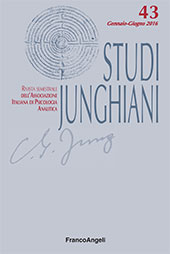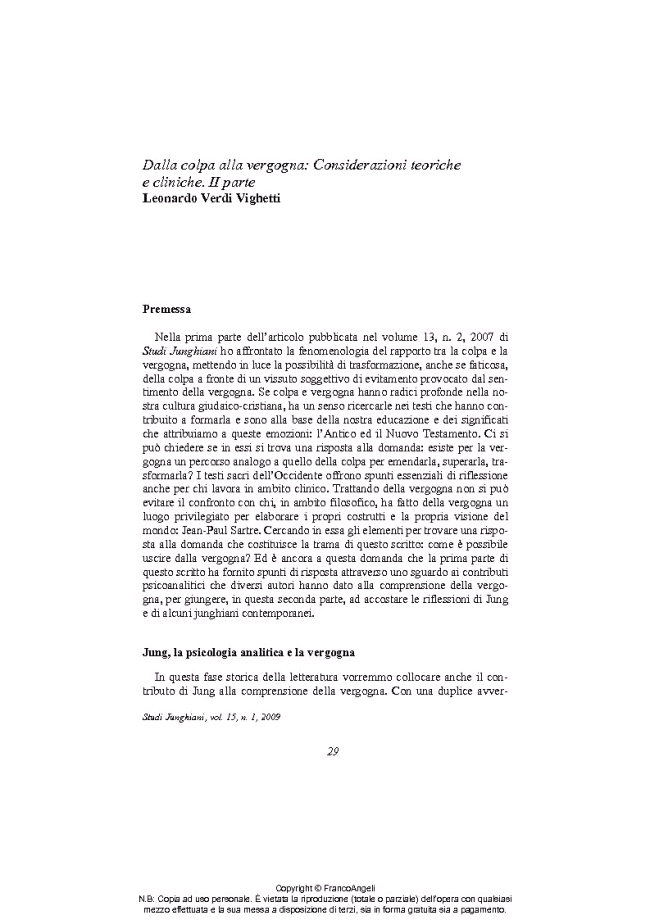Dalla colpa alla vergogna : considerazioni teoriche e cliniche : II parte
29-50 p.
C.G. Jung didn't face the problem of shame directly as he did with guilt, but nevertheless in Memories, dreams and reflections (1961) he refers an episode of his life in which it is possible to trace a phenomenology of this feeling and its evolution towards the discovery of personal dignity and responsibility. Some clinical references confirm this possible transformation. Shame seems to be an experience with an ethic potential (which can be used in a constructive or destructive way) which generates awareness. Shame is the feeling that accompanies the confrontation with the Shadow, since its more precocious manifestations, and therefore seems to be concomitant with the birth of conscience. Analysing the figure of the Trickster, it is possible to understand the meaning of shame. The archaic angst of shame, due to the lack of emphatic relationship between the mother and her child, asks for an analytical experience of emphatic understanding, capable to hold and to keep in contact with the patient's feeling of fra
gmentation. It means to listen and to reconstruct more than to interpret. Shame is a kind of "hologramemotion" where the part reflects the wholeness. The Author offers some clinical examples to face and to value shame as a transforming resource in the path towards individuation. [Publisher's Text].
Forma parte de
Studi junghiani : rivista semestrale dell'Associazione italiana di Psicologia Analitica : 29, 1, 2009-
Artículos del mismo número (disponibles individualmente)
-
Información
Código DOI: 10.3280/JUN2009-029002
ISSN: 1971-8411
KEYWORDS
- Inadeguatezza, inferiorità, evitamento, vergogna dell'essere, emendabilità, empatia
- Inadequacy, inferiority, avoidance, shame of being, emendability, empathy



